Air Operations, CBI
BURMA
- 8 490th Medium Bomb Squadron B-25s attack a bridge spanning the Mu River and a bridge at Changtu.
- 12 10th Air Force A-31s attack Daletme.
- 12 459th Fighter Squadron P-38s attack the airfield at Shwebo.
- B-25s and fighter bombers mount nearly 150 sorties against numerous targets in the Mogaung Valley.
CHINA
- 12 308th Heavy Bomb Group B-24s attack Lungling and Tengchung.
- 6 341st Medium Bomb Group B-25s and 12 14th Air Force P-40s attack barracks and warehouses at Chenyangi.
- 30 51st Fighter Group P-40s support Chinese Army forces on the Salween River front.
- 25 CACW and Chinese Air Force P-40s attack tanks, motor vehicles, and troops at Chueh-shan and Loning.
INDIA
- 36 10th Air Force A-31s attack targets at Moirang and near Bishenpur and Homalin (Burma).
[  | |   ] ]
Air Operations, East Indies - 380th Heavy Bomb Group B-24s attack Halmahera.
- V Bomber Command B-25s attack Larot (Ceram) and Saumlakki (Molucca Islands).
[  | |   ] ]
Air Operations, Europe
RAF BOMBER COMMAND
Evening Ops:
- 17 Mosquitos are sent on Oboe calibration tests to targets in France, 4 aircraft bomb Mondeville and 2 Orly; the others do not bomb. There are 7 RCM sorties.
US 12th AIR FORCE
ITALY:
- 12th Air Force B-25s and B-26s attack rail bridges throughout central and northern Italy.
- XII TAC A-20s attack supply dumps.
- XII TAC fighter-bombers attack railroads, several defended towns, and scores of tactical positions in direct and close support of Allied ground forces.
US 15th AIR FORCE
ROMANIA:
- Approximately 700 15th heavy bombers are dispatched on the first authorized direct attack against the Ploesti oil-refining facilities, but most groups turn back because of extremely heavy cloud cover. Only 206 heavy bombers loaded with 493 tons of bombs complete their attacks.
- 14 bombers are downed by flak and fighters
- Escorting P-38 and P-51 pilots of the 1st, 14th, 31st, and 325th Fighter Groups down 14 Axis fighters over Romania between 1025 hours and noon.
YUGOSLAVIA:
- A number of 15th Air Force heavy bombers deterred from the day's main attack against Ploesti attack marshalling yards at Belgrade and Nis.
- 15th Air Force escort fighters strafe the airdromes at Scutari (Albania) and Nis.
[  | |   ] ]
Air Operations, Japan 2 28th Composite Group B-25s sink a ship in the Kurile Islands during the day, and 2 other B-25s sink a second vessel just before midnight.
[  | |   ] ]
Air Operations, New Guinea - XIII Bomber Command B-24s attack Bosnik on Biak Island.
- V Bomber Command Force B-24s, B-25s, A-20s, and V Fighter Command fighter-bombers mount more than 100 sorties throughout the day against targets from Hansa Bay to Wewak.
- During the day, flights of 3rd Light Bomb Group A-20s orbit the landing area and provide close support as needed, and V Bomber Command B-25s rigged out as control planes spot targets and direct air and even artillery and shipborne fire missions.
- During the night, several Japanese bombers mount an ineffective raid against ground targets in the Hollandia area.
[  | |   ] ]
Admiralty Islands The 6th Army announces that the campaign is over. The fortified bases at Kavieng, New Ireland and Rabaul, New Britain are entirely surrounded by Allied forces. They will remain this way until the end of the war, escaping invasion owing to the US policy of avoiding Japanese strongholds if they can be bypassed and isolated instead. The Americans have lost 326 dead and 1,189 wounded, the Japanese 3,820 dead and 73 prisoners.
[  ] ]
Battle of the Atlantic Catalina 'S' of No 210 Squadron sights U-241 on the surface and attacks with 6 depth charges placing them perfectly across the submarine. A large oil slick began to form as the boat sinks stern first.
U-241|
| Class | Type VIIC |
| CO |
Oberleutnant zur See Arno Werr |
| Location |
Norwegian Sea, W of Trondheim |
| Cause |
Air attack |
| Casualties |
51 |
| Survivors |
None |
[  | |   ] ]
CBI
BURMA
Brig-Gen Merrill suffers a heart attack and is relieved of command of the Marauders. Col John E. McCammon, Merrill's assistant, takes temporary command. The Myitkyina Task Force is formed and includes two regiments of the Chinese 30th Division, elements of the Chinese 50th Division, and the remainder of the Marauders under command of Col Charles N. Hunter.
In the Myitkyina area the Chinese and Americans defend the airfield against Japanese counter-attacks, while units of the Chinese 30th and 50th Divisions begin the assault on the city and capture the railway station. The 1st Battalion of the Marauders overruns Zigyun, south of Myitkyina. The 150th Regiment, Chinese 50th Division, attacks from the north seizing the railway station.
[  | |   ] ]
Diplomatic Relations The UK and the USSR agree that Rumania will be in the Soviet sphere of influence while Greece will be in the British sphere.
[  | |   ] ]
Germany, Command Berlin announces that Field Marshal von Rundstedt is to be Commander-in-Chief West with Field Marshals Erwin Rommel and Johannes Blaskowitz his subordinates at Army Groups B and G in the north and south respectively. This arrangement is by no means ideal as Rommel and von Rundstedt quickly develop diverging views on the necessary strategy and both put them to Hitler, who establishes a poor compromise.
[  | |   ] ]
Italy The Monte Cassino abbey is finally taken by the Polish 12th Podolski Regiment of the 3rd Carpathian Division. At 1030 hours the Polish flag flies from what remains of the Benedictine monastery. The improvised Polish flag was hastily sewn with pieces of it coming from a Red Cross flag and soldiers' handkerchiefs. Men from 15 nations participated in the 4-month long battle. About 20,000 were killed and another 100,000 wounded.
Southwest of Monte Cassino in the Liri Valley Gen E.L.M. Burns' Canadian I Corps is now up to the Senger Line before Pontecorvo. The Senger Line, or Senger Bolt, is formerly the Hitler Line which is a series of fortified positions on the line Piedmonte-Aquino-Pontecorvo. On their left the French advancing in the direction of Pico, and on the coast the Americans, are meeting equally solid opposition.[MORE]
[  | |   ] ]
Mediterranean In sinking a ship from the convoy HA-43, U-453 records the last success by a German submarine in the Mediterranean.
[  | |   ] ]
New Guinea After a powerful air and artillery preparation, the main body of the 163rd Infantry Regiment (Gen Jens Doe) is landed on Insoemar Island, where Wadke airfield is sited. Supported by tanks, the 163rd RCT fight nearly 800 Japanese defending Wakde Island in caves, concrete pill boxes, and log bunkers. After a bloody struggle that lasts all day, in which nearly every foot of ground is contested, the Americans kill all but 4 of the defenders, suffering 40 killed and 107 wounded. On the mainland, the 3rd Battalion, 163rd Infantry, begins a westward advance across the Tor River, establishing a small bridgehead.
[  | |   ] ]
Pacific - The US submarine Puffer (SS-268) attacks a Japanese convoy in the Java Sea sinking the army cargo ship Shinryo Maru (3181t) about 40 miles east-southeast of Surabaya.
- The Japanese merchant tanker Nichiyoku Maru (1898t) is sunk by a mine orr northeast Sumatra laid by the British submarine Tally Ho on May 14.
[  | |   ] ]
Turkey Martial law is declared after fascist disturbances.
[  ] ]
Images from May 18, 1944
Entering the Ruins of Cassino
|
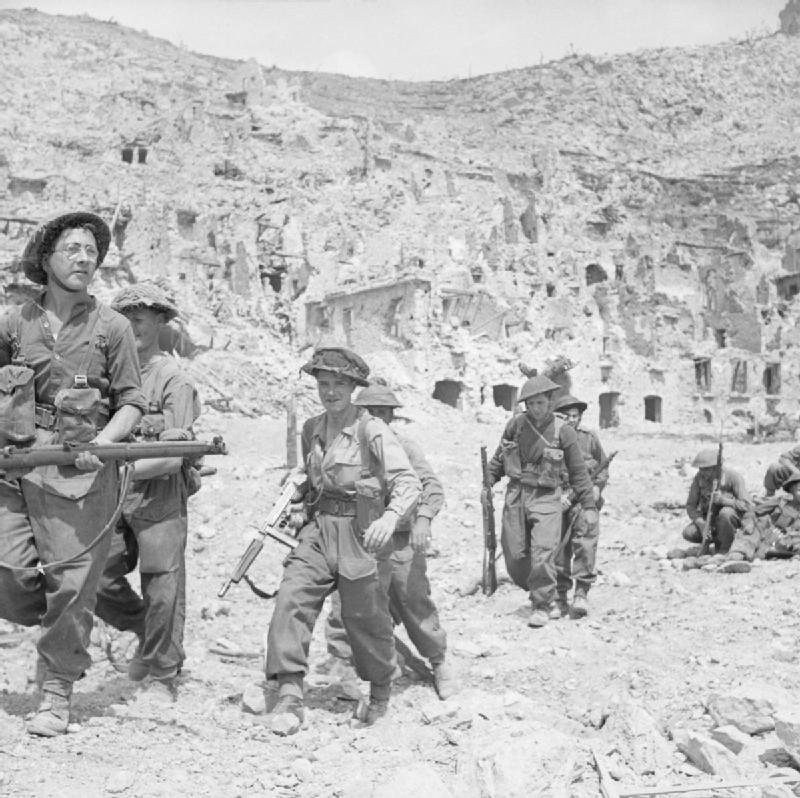 |
|
Fighting among the Ruins of the Monastery
|
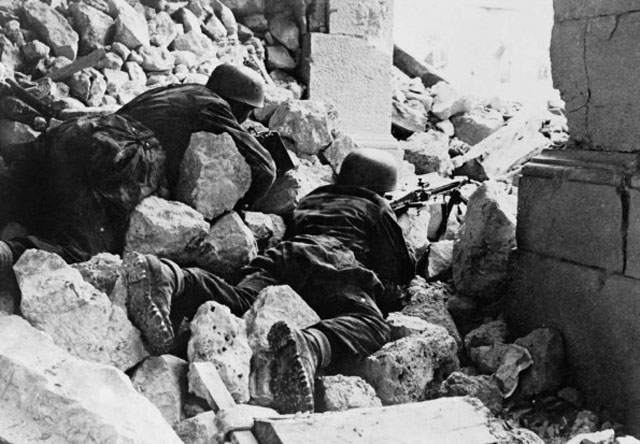 |
|
Throwing Grenades at the Enemy
|
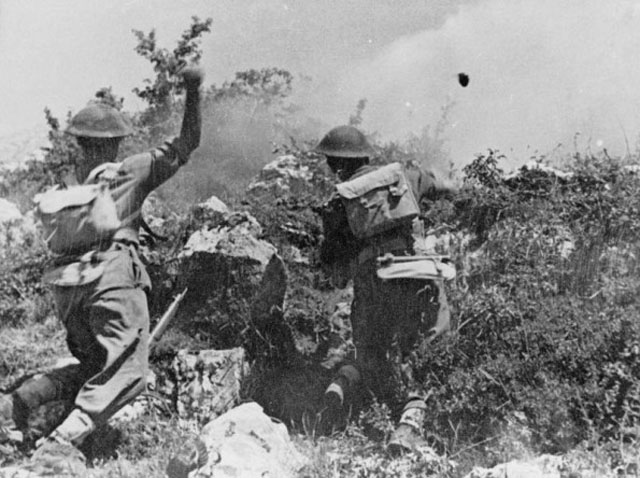 |
|
Sherman Tanks and Infantry in the Ruins of Cassino
|
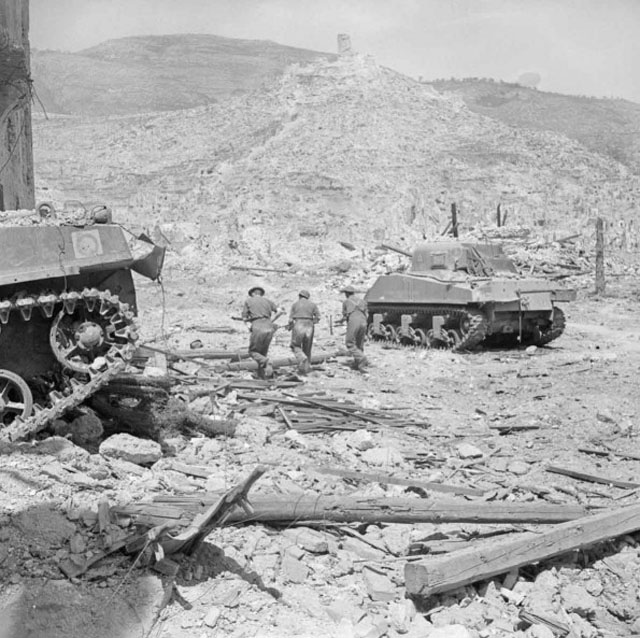 |
|
Aerial View of the Monastery
|
 |
|
A Knocked-out German StuG III Assault Gun
|
 |
|
Mule Pack on way to the Front
|
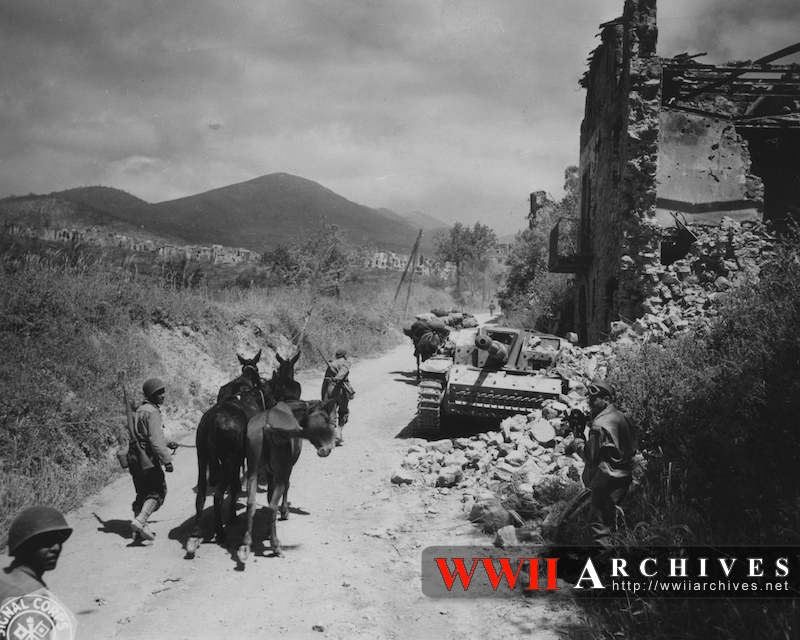 |
|
Passing through the Ruins of Cassino
|
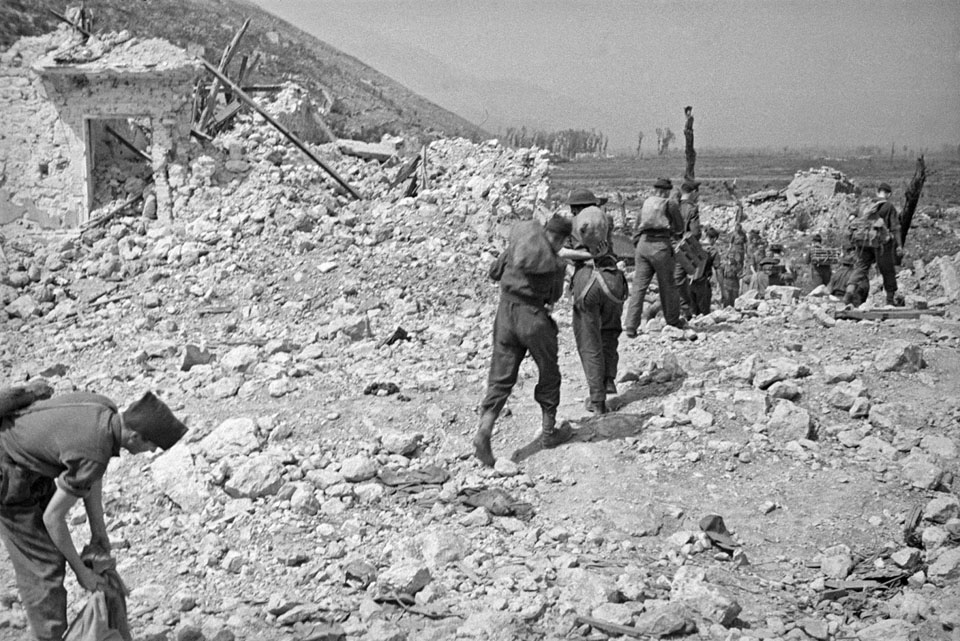 |
|
Examining a Knocked Out Sherman Tank
|
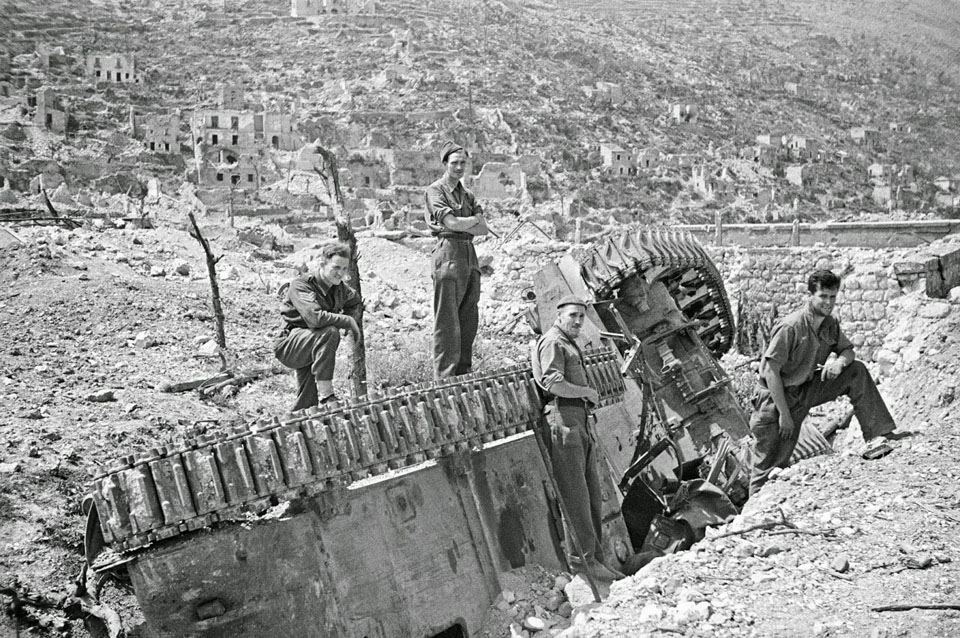 |
|
Members of the 4 NZ Armored Brigade
|
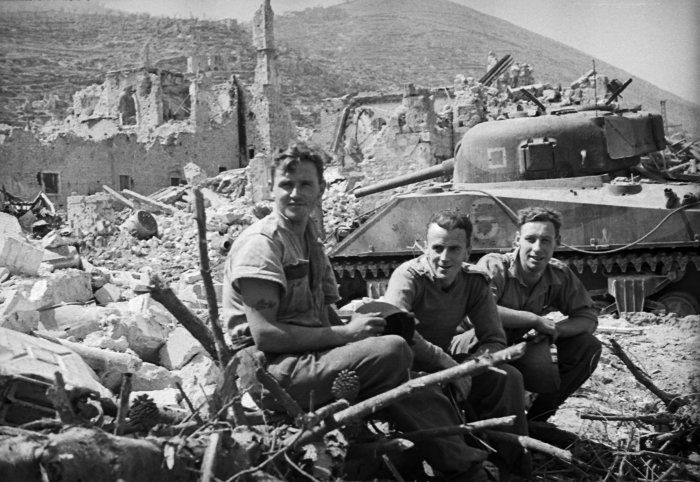 |
|
Entering the Ruins of Cassino
|
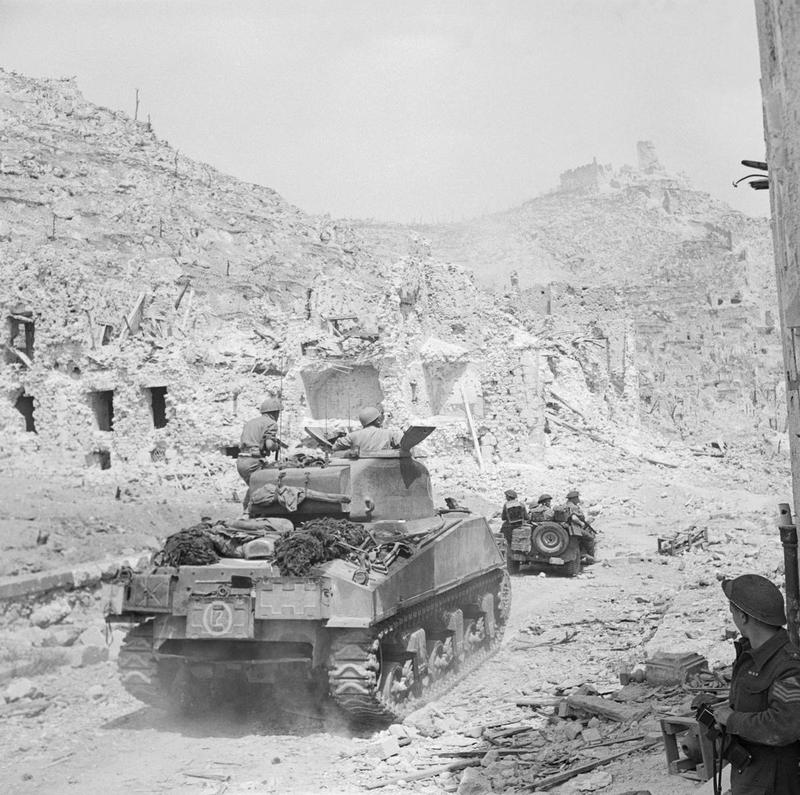 |
|
A 4.2-in Mortar of 1st Infantry Brigade's Support Group
|
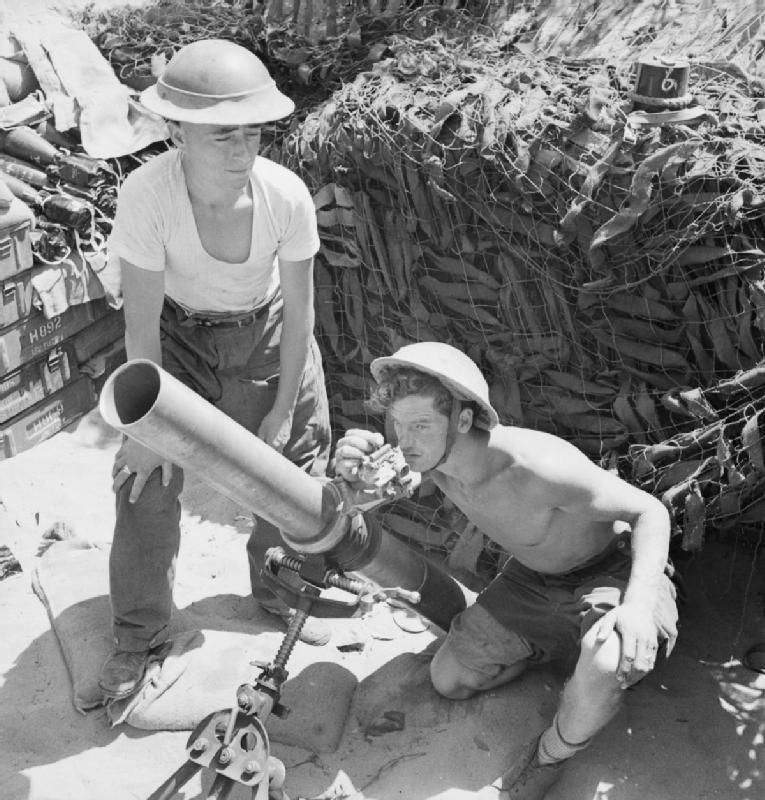 |
|
|











